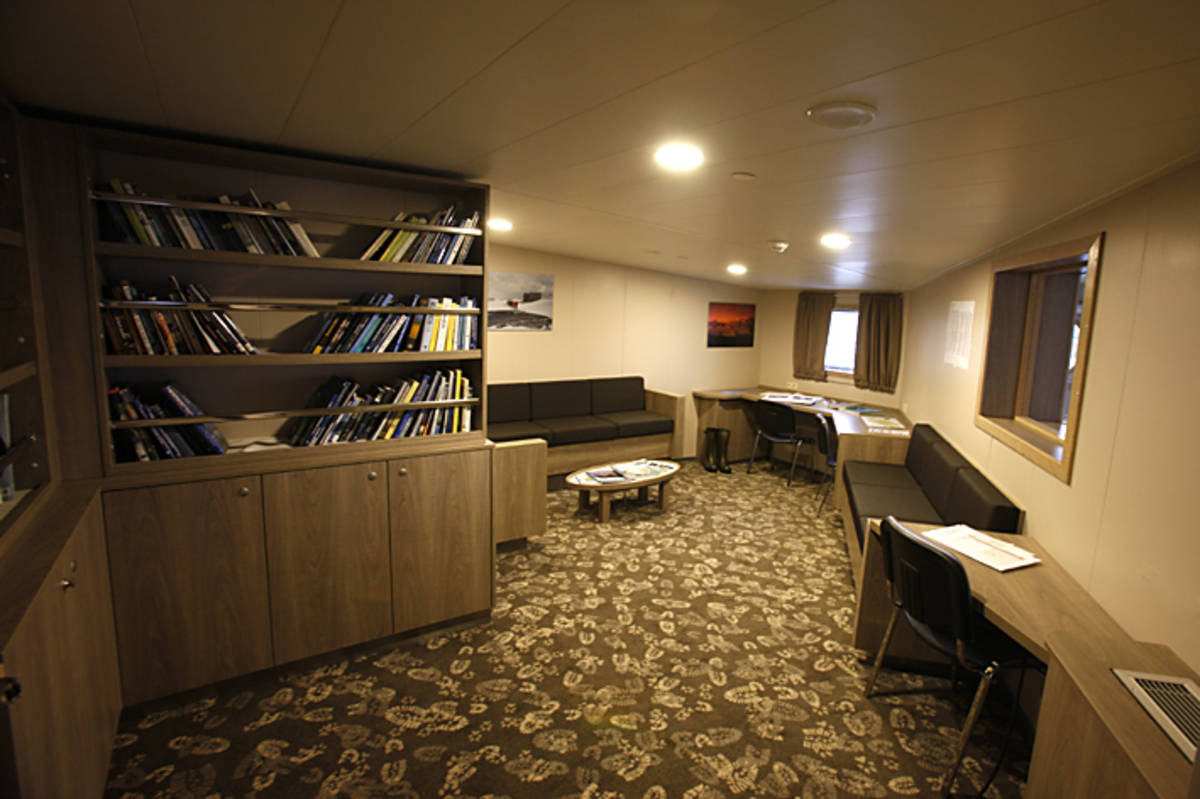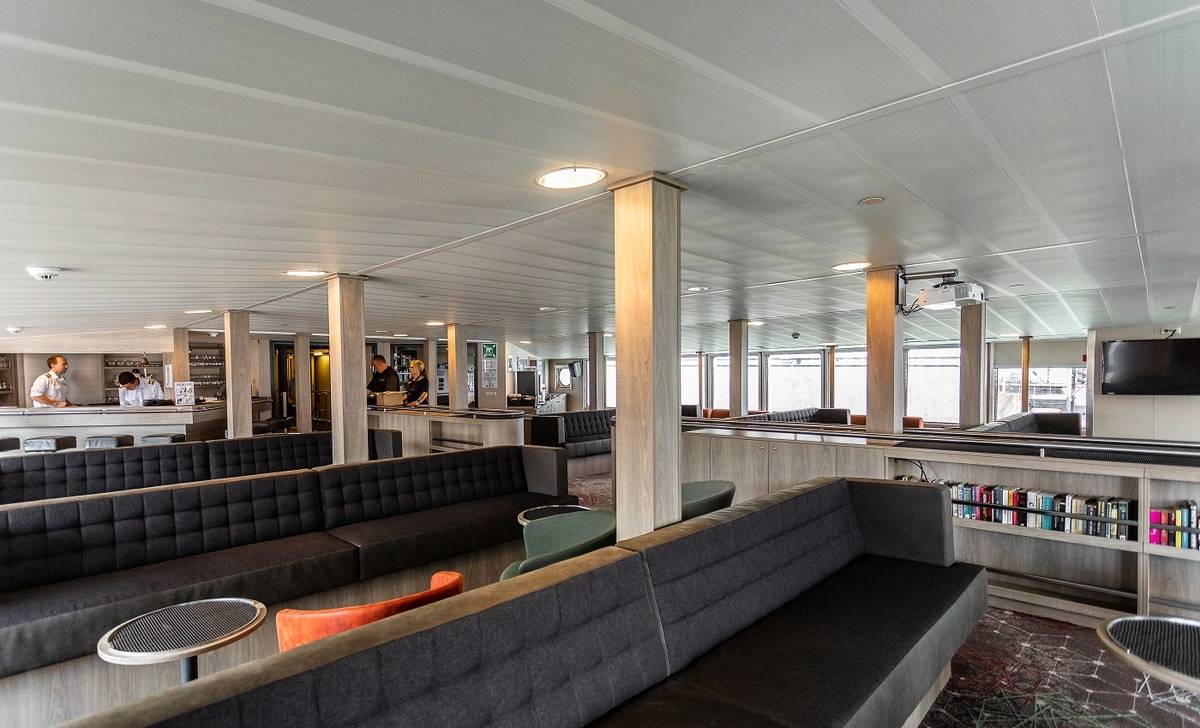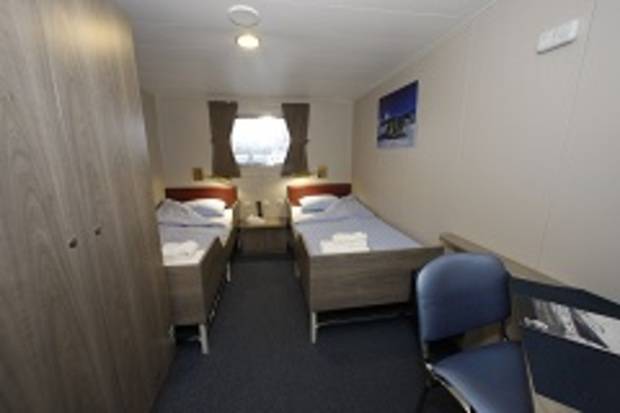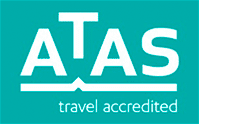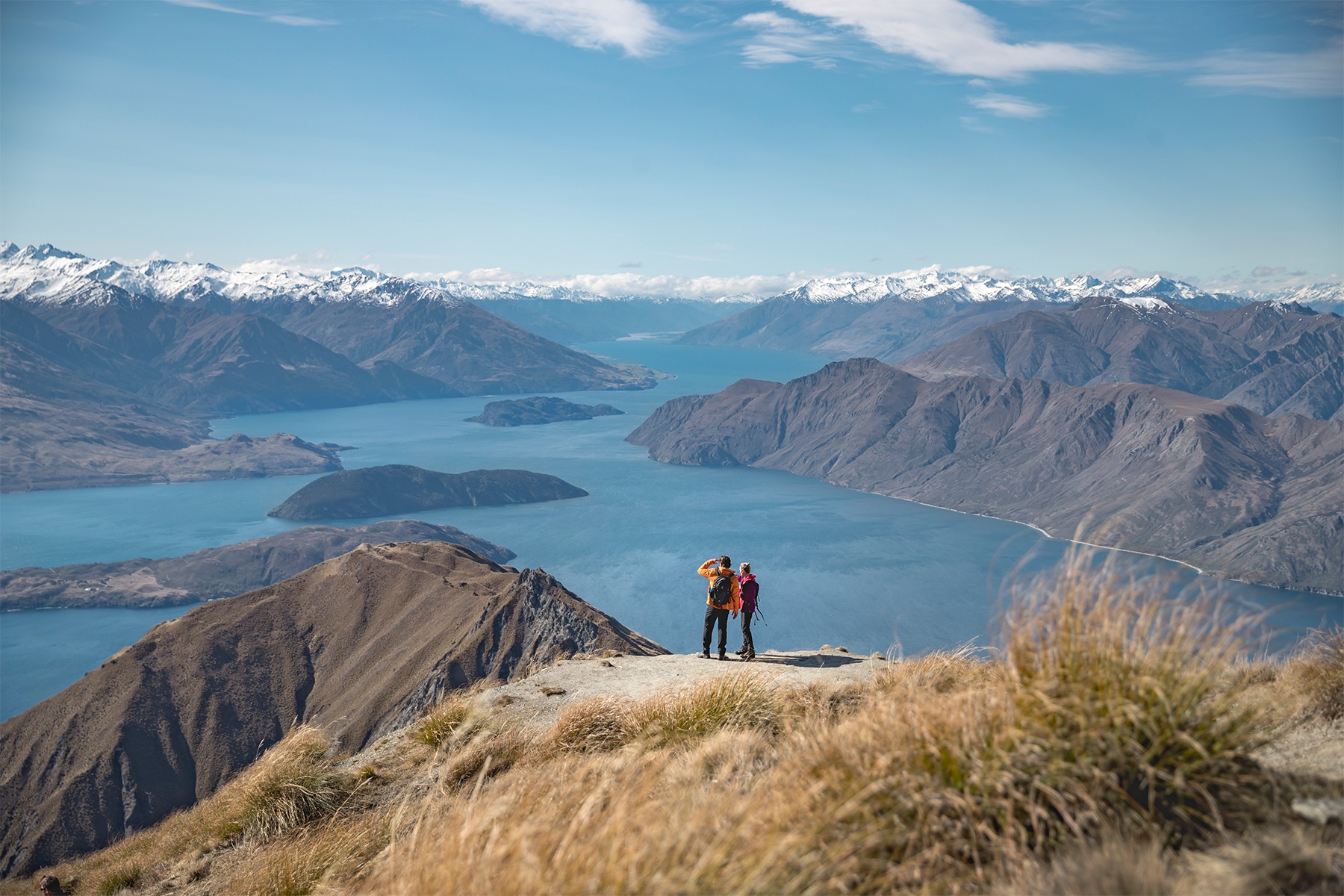Atlantic Odyssey incl. Antarctic Peninsula to Cape Verde
43 Days - Plancius
The Atlantic Odyssey cruise visits some of the remotest islands in the world, crossing the migratory paths of Arctic Terns, Long-tailed Skuas, other birds, and a variety of whales as they make their annual expeditions north for the breeding season.
from AUD $28889pp

Home » 43 Day M/V Plancius: Atlantic Odyssey incl. Antarctic Peninsula to Cape Verde
Itinerary in Brief
- Day 1: End of the world, start of a journey
- Day 2 – 3: Path of the polar explorers
- Day 4 – 7: Entering Antarctica
- Day 8 - 9: Familiar seas, familiar friends
- Day 10: End of the world, start of a journey
- Day 11 – 13: Sea route to South Georgia
- Day 14 – 16: South Georgia sights
- Day 17– 21: Once more to the sea
- Day 22: The quest continues at the great Gough Island
- Day 23 – 26: Tristan da Cunha and all the pretty birds
- Day 27 – 30: Subtropical seas and seabirds
- Day 31 – 32: St. Highlights of Saint Helena
- Day 33: Heading out of St. Helena
- Day 34 – 35: Sailing the Mid-Atlantic Ridge
- Day 36 – 37: Onward to Ascension Island
- Day 38 – 42: Crossing the equator
- Day 43: The pleasures of Praia

Day 1: End of the world, start of a journey
Your voyage begins where the world drops off. Ushuaia, Argentina, reputed to be the southernmost city on the planet, is located on the far southern tip of South America. Starting in the afternoon, you embark from this small resort town on Tierra del Fuego, nicknamed “The End of the World,” and sail the mountain-fringed Beagle Channel for the remainder of the evening.
Day 2 – 3: Path of the polar explorers
Over the next two days on the Drake Passage, you enjoy some of the same experiences encountered by the great polar explorers who first charted these regions: cool salt breezes, rolling seas, maybe even a fin whale spouting up sea spray. After passing the Antarctic Convergence – Antarctica’s natural boundary, formed when north-flowing cold waters collide with warmer sub-Antarctic seas – you are in the circum-Antarctic upwelling zone. Not only does the marine life change, the avian life changes too. Wandering albatrosses, grey-headed albatrosses, black-browed albatrosses, light-mantled sooty albatrosses, cape pigeons, southern fulmars, Wilson’s storm petrels, blue petrels, and Antarctic petrels are a few of the birds you might see.
Day 4 – 7: Entering Antarctica
Gray stone peaks sketched with snow, towers of broken blue-white ice, and dramatically different wildlife below and above. You first pass the snow-capped Melchior Islands and Schollaert Channel, sailing between Brabant and Anvers Islands.
Sites you may visit include:
Danco Island – Activities here may focus on the gentoo penguins nesting on the island, in addition to the Weddell and crabeater seals that can be found nearby.
Neko Harbour – An epic landscape of mammoth glaciers and endless wind-carved snow, Neko Harbour offers opportunities for a Zodiac cruise and landing that afford the closest views of the surrounding alpine peaks.
Paradise Bay – You may be able to take a Zodiac cruise in these sprawling, ice-flecked waters, where there’s a good chance you’ll encounter humpback and minke whales.
Pléneau & Petermann Islands – If the ice allows it, you could sail through the Lemaire Channel in search of Adélie penguins and blue-eyed shags. There is also a possibility you’ll encounter humpback and minke whales here, as well as leopard seals.
Port Lockroy – After sailing through the Neumayer Channel, you may get a chance to visit the former British research station – now a museum and post office – of Port Lockroy on Goudier Island. You may also be able to partake in activities around Jougla Point, meeting gentoo penguins and blue-eyed shags.
At the nearby sites, such as Damoy Point there may be the opportunity for snowshoeing to the old ski-way, this is also one of our favourite camping sites.
Wilhelmina Bay & Guvernøren – This is a great place to spot humpback whales. You also may embark on a Zodiac cruise ending at the ghostly wreck of the Guvernøren, a whaling vessel that caught fire here in 1915. Around the Melchior Islands, amid a frozen landscape peopled with icebergs, you may encounter even more whales, leopard seals, and crabeater seals.
Conditions on the Drake Passage determine the exact time of departure.
Day 8 - 9: Familiar seas, familiar friends
Your return voyage is far from lonely. While crossing the Drake, you’re again greeted by the vast array of seabirds remembered from the passage south. But they seem a little more familiar to you now, and you to them.
Day 10: End of the world, start of a journey
Your voyage begins where the world drops off: Ushuaia, Argentina, said to be the southernmost city on the planet, located on the far southern tip of South America. Starting in the afternoon, we embark from this small resort town on Tierra del Fuego (nicknamed “The End of the World”) and sail the mountainous Beagle Channel for the rest of the evening.
Day 11 – 13: Sea route to South Georgia
Today we are en route to South Georgia. After passing the Antarctic Convergence, which is a natural boundary formed when north-flowing cold waters collide with warmer sub-Antarctic waters, we enter the circum-Antarctic upwelling zone. Not only does the marine life change, the bird life changes, too: A variety of albatrosses and petrels show up, along with Cape pigeons and southern fulmars.
Day 14 – 16: South Georgia sights
Our aim today is to visit some of the world’s top king penguin rookeries. This time of year you have a good chance of seeing these animals nesting on eggs, with their chicks nearby. The rookeries are sometimes overflowing, with penguins traveling to and from the beach.
Possible visits in this region include:
Salisbury Plain, St. Andrews Bay, Gold Harbour – Here you can see not only the massive king penguin colony, but also elephant seals and limitless fur seal pups playing in the surf.
Grytviken – We also have the opportunity to check out this abandoned whaling station, where king penguins walk the streets and elephant seals lie around like they own the place – because they basically do! You might also see the South Georgia Museum as well as Shackleton’s grave here.
Cooper Bay – This is a fine place for a Zodiac cruise, and this bay also houses a rookery of macaroni penguins. King penguins, pintails, and giant petrels may also appear here.
Moltke Harbour – Located in Royal Bay, this scenic spot gives you the chance to see the huge king penguin colony that lives here.
Day 17– 21: Once more to the sea
A pleasant tailwind often accompanies the vessel through the westerlies, and on both sides of the Antarctic Convergence, you might see large numbers of Antarctic and sub-Antarctic seabirds.
Day 22: The quest continues at the great Gough Island
Today we plan to approach Gough Island for a Zodiac cruise in Quest Bay, if the weather permits. Here you might see northern rockhopper penguins and sub-Antarctic fur seals. In previous years, it has been possible for us to circumnavigate most of Gough Island’s 33-mile circumference, taking in this area’s splendid scenery and abundant wildlife.
Day 23 – 26: Tristan da Cunha and all the pretty birds
The remote islands of Tristan da Cunha are famed for their plentiful bird populations, which include rockhopper penguins, several species of albatross, petrels, skuas, terns, and many others. Our goal during this stage of our voyage is to visit the small settlement on the west side of the main island, but we might also land at Seal Bay on the south side of Tristan da Cunha or at Sandy Point on the east side.
In these stunning locations, you could encounter such exotic wildlife as yellow-nosed albatrosses and sub-Antarctic fur seals, all while exploring a rarely visited spot. We also intend to land at Nightingale Island and Inaccessible Island, both of which offer great views of beautiful seabirds ranging from yellow-nosed albatrosses to brown noddies.
Two days are reserved at Tristan da Cunha in case of bad weather, but please remember that nature determines our itineraries here: Since beginning the Atlantic Odyssey cruise in 1998, adverse weather led to the cancellation of 35% of Tristan da Cunha landings. If we have to divert for safety reasons, we will find good alternatives.
Day 27 – 30: Subtropical seas and seabirds
Seabirds and dolphins indigenous to this region often follow the vessel.
Day 31 – 32: St. Highlights of Saint Helena
After we land at Jamestown on Saint Helena Island, you will have the opportunity to enjoy the area’s local culture, pleasant climate, and endemic bird life. You can pay a visit to Longwood House, where Napoleon died in exile; walk the 699-step Jacob’s Ladder, if you’re feeling ambitious; or snorkel the shallows offshore, seeing multitudes of tropical and subtropical fish.
Please note: You have the option to disembark and fly home from Jamestown, if flights are available. In the evening, we will depart for Ascension Island and Praia, Cape Verde, where you can also disembark. Make sure to book voyage PLA33-26 if you want to fly out from Praia.
Day 33: Heading out of St. Helena
Our voyage starts in Jamestown, a uniquely situated city that offers much to see before we set sail. Enjoy the local British culture, tropical climate, and endemic birds of this remote volcanic island. You can visit Longwood House, where Napoleon died in 1821, and even walk the 699-step Jacob’s Ladder if you feel ambitious. If you have more time, you can also go on small hikes or snorkeling in the shallows, seeing multitudes of tropical and subtropical fish.
Day 34 – 35: Sailing the Mid-Atlantic Ridge
Today we aim to sail along the Mid-Atlantic Ridge, the sprawling submarine mountain range that runs about 16,000 km (10,000 miles) from the Arctic Ocean toward the southern tip of Africa. Join us for stargazing on the aft deck, where we will show you the many highlights of the equatorial sky. Weather permitting, these celestial wonders can be seen with binoculars or even with the naked eye.
Day 36 – 37: Onward to Ascension Island
This dry volcanic island is a major home for sooty terns (also known as wideawakes), whose colony here sometimes grows to over a million breeding pairs. You may get the chance to hike up to the richly vegetated summit of the island, and we might also visit the beach to watch green turtles laying eggs.
Day 38 – 42: Crossing the equator
Joining us across the equator are Arctic terns and long-tailed skuas flying their northbound spring migration. At this stage of the voyage, we will hope for good weather as we attempt more stargazing on deck, observing how the polar star becomes visible on the northern horizon.
Day 43: The pleasures of Praia
We arrive in the town of Praia on Cape Verde’s Santiago Island, disembarking later that day at 18:00 hours. Though no lunch will be served, you are free to stay on board or store your luggage until disembarkation. If you have the time, we offer an additional tour in and around Praia. Here you can visit the historic Cidade Velha and its massive hillside fortress, built to defend against English raiders. Other sights include the oldest Christian church in the tropics as well as the slave whipping post in the main square. You can also simply explore the streets of Praia, enjoying the folk music spilling out of tavern windows.
| Dates | Cabin | From | Special Offer |
|---|---|---|---|
| 23 Mar 2026 - 04 May 2026 | AUD $28889pp | ||
| Quadruple Porthole Cabin | AUD $28889pp | Contact us | |
| Twin Porthole Cabin | AUD $36349pp | Contact us | |
| Triple Porthole Cabin | AUD $36349pp | Contact us | |
| Twin Window Cabin | AUD $38016pp | Contact us | |
| Twin Deluxe Cabin | AUD $41111pp | Contact us | |
| Superior Cabin | AUD $44048pp | Contact us | |
**Prices are per person based on twin / shared accommodation.
**Single supplements may apply
Cabin Details
Quadruple Porthole Cabin
Two upper and two lower berths, one porthole, private shower and toilet, desk and chair, flatscreen TV, telephone and WiFi (supplemented), hair-dryer and ample storage space.
Triple Porthole Cabin
One upper and two lower berths, one porthole, private shower and toilet, desk and chair, flatscreen TV, telephone and WiFi (supplemented), hair-dryer and ample storage space.
Twin Porthole Cabin
Two lower berths, one porthole, private shower and toilet, desk and chair, flatscreen TV, telephone and WiFi (supplemented), hair-dryer and ample storage space.
Twin Window Cabin
Two lower berths, one window, private shower and toilet, desk and chair, flatscreen TV, telephone and WiFi (supplemented), hair-dryer and ample storage space.
Twin Deluxe Cabin
Two lower berths, two windows, private shower and toilet, desk and chair, flatscreen TV, telephone and WiFi (supplemented), hair-dryer and ample storage space.
*corner cabins which are slightly more spacious than the normal twin porthole/window cabins
Superior Cabin
One double bed, one sofa bed, two windows, private shower and toilet, desk and chair, flatscreen TV, telephone and Wifi (supplemented), refrigerator, coffee and tea maker, hair-dryer and ample storage space.
Plancius Deckplan

Specifications
- Passengers: 116 in 53 cabins
- Staff & crew: 47
- Length: 89 meters (293 feet)
- Breadth: 14,5 meters (47 feet)
- Draft: 5 meters (16 feet)
- Ice class: 1D (Plancius has a Lloyds class notation 100A1 Passenger ship, Ice Class 1D at a draught of 5 meters)
- Displacement: 3211 tonnes
- Propulsion: 3x Diesel-Electric
- Speed: 10.5 knots average cruising speed
Whats included?
- Voyage aboard the indicated vessel as indicated in the itinerary
- All meals throughout the voyage aboard the ship including snacks, coffee and tea.
- All shore excursions and activities throughout the voyage by Zodiac.
- Program of lectures by noted naturalists and leadership by experienced expedition staff.
- Free use of rubber boots and snowshoes.
- Luggage transfer from pick-up point to the vessel on the day of embarkation, in Ushuaia.
- All miscellaneous service taxes and port charges throughout the programme.
- Comprehensive pre-departure material.
What’s not included?
- Any airfare, whether on scheduled or charter flights
- Pre- and post- land arrangements.
- Passport and visa expenses.
- Government arrival and departure taxes.
- Meals ashore.
- Baggage, cancellation and personal insurance (which is strongly recommended).
- Excess baggage charges and all items of a personal nature such as laundry, bar, beverage charges and telecommunication charges.
- The customary gratuity at the end of the voyages for stewards and other service personnel aboard (guidelines will be provided).
Notes
PLEASE NOTE:
All itineraries are for guidance only. Programs may vary depending on ice, weather, and wildlife conditions. Landings are subject to site availabilities, permissions, and environmental concerns per IAATO regulations. Official sailing plans and landing slots are scheduled with IAATO prior to the start of the season, but the expedition leader determines the final plan. Flexibility is paramount for expedition cruises. The average cruising speed for our vessel is 10.5 knots.








